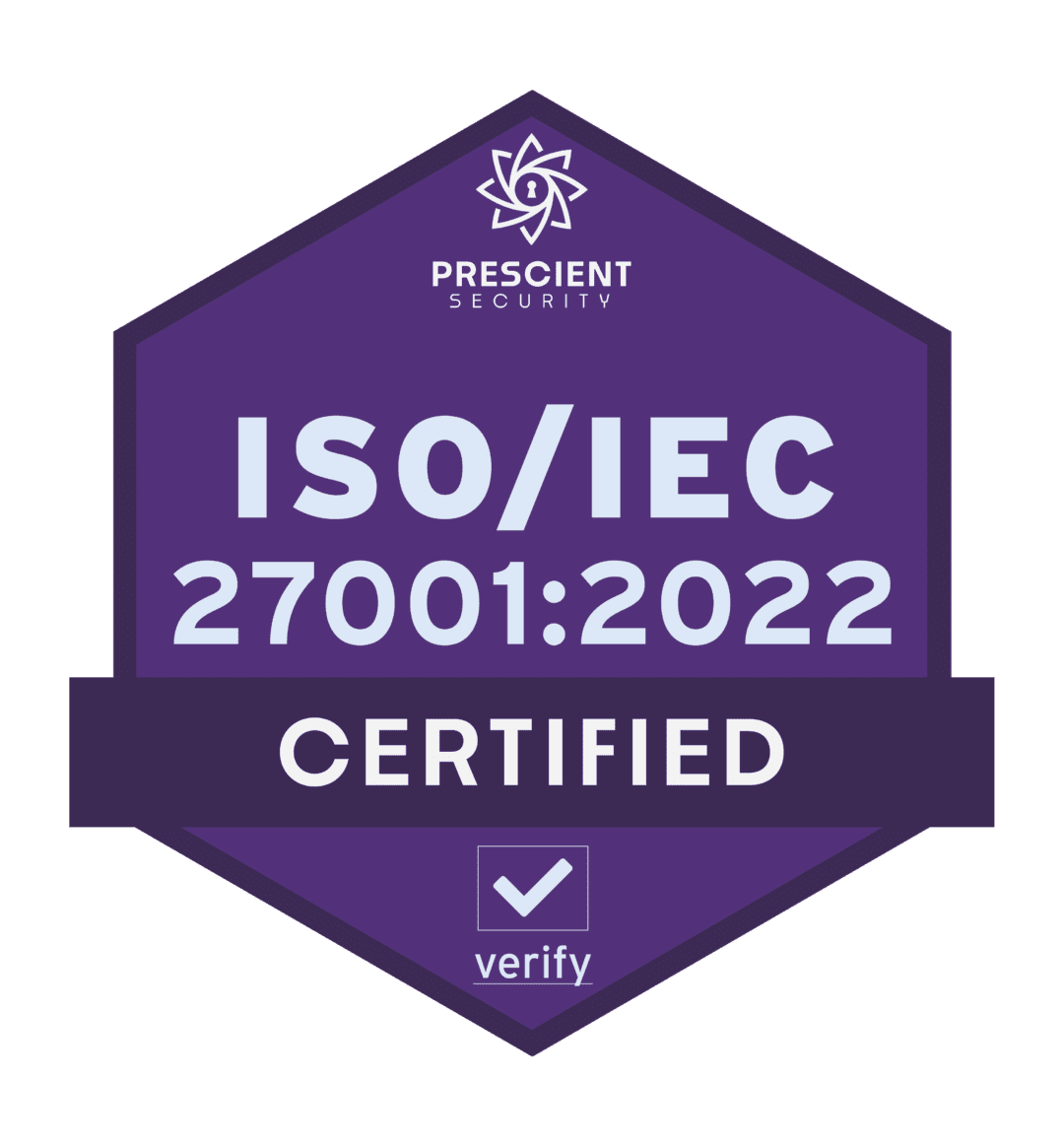Tamsen Webster
How a messaging and presentation strategist infuses her weekly newsletter with the ideas she shares as a communication thought leader. This is Tamsen Webster’s story about Pushing Send.
Tamsen Webster is a keynote speaker and message strategist that focuses on big ideas. She’s spent the last two decades in marketing and is a Weight Watchers leader and TEDx Executive Producer. She is a self proclaimed “Idea Whisperer” and she helps people tell the story of their ideas.
Key Points From This Episode:
- Tamsen defines The Red Thread and she shares how she uses it as a method to help people find and build connection.
- The Red Thread is a way for our brain to come up with a solution for why things make sense together- the story that our brain builds to connect the problem and solution
- This concept can be applied to email because it’s about helping people to clarify what they are asking for and to make sure that the people they are asking for it are sure to take it.
- Tamsen’s email workflow involves sketching out a red thread so she knows what the main elements are and then just sitting down to write it out. She finds that talking it out first helps greatly.
- She views her newsletter as a way to show that she’s doing the work and to help others do the same.
Tweetables:
“The main problem I want to solve is that there is so often a gap between these amazing, amazing ideas and the impact they can have. And so often that gap simply in how they’re articulated.” – @TamaDear
“The Red Thread is that it’s the story that our brain builds to connect the problem and solution. And simultaneously it is also the name of the method I’ve developed to help people find and build that connection… that story.” – @TamaDear
“Ideas aren’t found, they’re built and they’re built by the story that kind of happens in the dark.” – @TamaDear
“That’s how I use the newsletter, that’s for me is to show that I’m doing the work and help people do their own and to create knowledge and to stay in it and to be constantly doing it and to help other people do the same.” – @TamaDear
Links Mentioned in Today’s Episode:
- Tamsen Webster: Website, LinkedIn, Twitter
- Bryan Kelly: LinkedIn
- rasa.io
- The Red Thread Newsletter
- Ericsson
- TEDx
- Chris Anderson
- Buffer
- Seth Godin
- Ann Handley
- Warren Buffett
- Clubhouse
Episode Transcript
Tamsen Webster:
I think I should go to email newsletter jail. So I have resisted every possible effort to monetize my newsletter. Every couple of years I’m like, hey, you know, take a look at what I’m doing to people like should send it more often. You should use it to sell more stuff. And I was just like, I don’t want those emails. Again, it comes back. Like I don’t respond to those emails. And the main problem I want to solve is that there is so often a gap between these amazing, amazing ideas and the impact they can have. And so often that gap simply in how they’re articulated
Bryan Kelly:
From rasa.io, the tool for sending smarter and better email newsletters, this is Pushing Send, a show featuring people who sent emails their subscribers actually want to read I’m Bryan Kelly, and on today’s show how a messaging and presentation strategist infuses her weekly newsletter with the ideas she shares as a communication thought leader. Here’s Tamsen Webster. So your book is called The Red Thread. Your email newsletter is The Red Thread, which we’ll talk about in a bit. And you also give keynote talks on The Red Thread. So could you first define this phrase for us?
Tamsen Webster:
So, the red thread gets its name from a Swedish idiom, typically where people are referring to it at the thing that holds things together. The thing that makes things make sense. More specifically, I like to think of it as the story that our brain builds to connect problem and solution, issue and idea, question and answer, because this really is how our brain works between each of those things is a story that, you know, our brains come up with an explanation for why things make sense together. And if we don’t see that connection, things don’t make sense. We don’t act. We only act, and we only, things only make sense if it’s there. And so the red thread is that it’s the story that our brain builds to connect the problem and solution. And simultaneously it is also the name of the method I’ve developed to help people find and build that connection… that story,
Bryan Kelly:
It’s such a vivid phrase. And you mentioned it was Swedish. Where did you first encounter this idiom? Was it something you grew up with?
Tamsen Webster:
No, I’m not Swedish. They’re like, how did you find this thing? Well, it turns out there are red, you know, once I started looking into, it turns out there, there are red threads in many cultures and many languages, but I first heard it with a Swedish client. And I thought at the time that it was unique to that organization, I was, my client was Ericsson. I was actually in Stockholm or right outside of it in their offices. And it was talking them about completely something else. And they were like, they asked that question. They’re like, well, what’s the red thread of this. And I could tell by context, they meant like, what’s the main idea. What’s the big takeaway. But I was like, I’d never heard that before. And I’m like, Oh, what a great phrase. And then I thought to myself too bad, it belongs to Ericsson. And then a couple of years later with a completely different client, they happened to have one of the folks on the team. You know, this was in the U S one of the folks in the team though, happened to be Swedish. And then she brought it up and she was like, yeah. Okay. So what’s the w so this is the red thread that we’re working towards and I’m like, I’m like, did you work at Ericsson? She was like, no. And I was like, well, tell me about that phrase. And she said, you don’t have that phrase here. And I was like, not really not in the way you just used it, but I’m really interested in it. And so I asked her if she knew where it came from, and I think none of us really ever think about our own idioms. Like why do we have it that, so she didn’t know. And that sent me off on a path to figure out exactly why the Swedish call with the red thread. And that was it. That was a fun discovery.
Bryan Kelly:
And thus began your journey to pull on the red thread.
Tamsen Webster:
Exactly. Like, let me go find the story behind this thing. And it’s actually great. I mean, I just, I love it. It just became deeper and deeper, just became more and more appropriate to what I was working on at the time, because at the time I had developed separately this process for helping to find the power and idea how to articulate it, just how to kind of make a case for something quickly and concisely. Because at the time I was in addition to my job in brand and message strategy, I was moonlighting as the executive producer of TEDx Cambridge, which is one of the oldest and now one of the only 10 legacy level TEDx events in the world. So we’re one of the top tier. And I had developed this process for figuring this out. That was based on story structure, kind of recreating the thought process that someone had behind their idea in the first place. But I didn’t have a name for it. I mean, at the time it was like gold problem, truth change action. And with a background of brand and message strategy, I’m like, this is not going to work long-term. So when I heard this phrase, I was like, yeah, but, okay, this red thread is describing this thing that I’m trying to help people find. I mean, the Chris Anderson the head of Ted referred to it as a through-line and his book on Ted talks. And I was like, that’s great. And I found a way to find it, but what the heck do I call it? And when I started to explore why the red thread is called the red thread, or like, which of the very many red threads out there in the world is the Swedish one referring to it turns out it comes from a story. And I just thought that was so appropriate. And the story is the story of Theseus and the Minotaur and the Minotaur’s labyrinth. And the red thread is what, uh, Ariadne a woman gave to Theseus to help him trace his steps and path through the Minotaur’s labyrinth. So he could find his way back out again, after he’d slayed the monster. And so just at this beautiful metaphorical level, I was like, this is perfect because a lot of times when people have an idea, they don’t even know how they came up with it. The idea just kind of pops into their head. But as I like to say, ideas, aren’t found they’re built and they’re built by the story that kind of happens in the dark. And so this process that I had figured out for helping someone reconstruct that step-by-step story as it came to be, I was like, well, that’s exactly what Theseus did. So thus, I called it the red thread.
Bryan Kelly:
Now, is it a stretch to think the red thread idiom can translate to email as a communication channel?
Tamsen Webster:
Oh, it is. It is a hundred percent there for a couple of different reasons. I mean, like I said, I, I spent 25 years brand and message strategy in organizations and agencies just, and obviously email is the currency of communication and all of those things. And as you well know, as do your listeners, oftentimes our best intentions in email go the gang ugly as the poem goes, but they often go very, very awry. So this process that I developed to help people articulate big ideas, well, it turns out it’s one that helps you articulate kind of any idea, because it is based back on what I said before on how is it that our brain A makes sense of information and B decides to take action on something. And while plenty of email is just about, Hey, here’s an update on this thing. Or let me explain this other thing to you. And when used, well, email is not a place for discussion. There are plenty of times when I would say maybe most of the time when whatever email you’re sending is meant to create an action afterwards. I mean, yes, there’s some updates, but most of the time it’s meant to spur an action of some kind. And that’s really what the red thread is. It’s about helping people clarify exactly what it is that they’re asking for. And then second to make sure that they’re asking for it in such a way that the people that they’re asking it of, or most likely to take it. So shade of meaning on this kind of red thread, being the story that connects problem and, and solution or question and answer is that specifically the very best of those are when you’re trying to create a red thread around your idea, even an email form, you’re really trying to create the story that the person that you’re writing to would build in their heads. So not your story. You actually need to build their story, their case for the thing that you’re asking them to do for me, that’s how I see it applying to email because A, the process helps identify some of the major components that your email needs to have in order to be effective. And then second, it gives you a framework for even how to build that email in a way that’s much more likely to be effective.
Bryan Kelly:
When we come back, Tamsen shares the process she goes through to publish weekly newsletter and some of the struggles she faces while doing it. I’m Bryan Kelly, and you’re listening to Pushing Send from rasa.io.
rasa.io:
Creating email newsletters takes a lot of ime. You might curate articles, write content, tweak your template, and look up metrics and not to mention you’re probably doing all of this once a week. well at rasa.io, we said enough and built a free tool to simplify the process, which saves you time. It also uses AI to personalize emails for each subscriber based on their interests. That means they get stuff they like to read. Want to see how it works? Visit www.rasa.io and click how it works.
Bryan Kelly:
Welcome back to Pushing Send. I’m Bryan Kelly Tamsen Webster is an in-demand speaker and strategist who helps brands build big ideas and bring them to life. She also applies the same process to her own weekly newsletter. Here’s Tamsen walking me through her workflow. What does the process look like putting your red thread newsletter together each week?
Tamsen Webster:
There’s always a back half to the newsletter, which is something I call the swipe file. And the swipe file is a compendium of links that I have sent out over the course of the previous week. And those are the results of the fact that I’m constantly scanning for new studies, stories. Just things that I would be more useful helped me be more effective in my work, useful to my clients as they’re putting their messages together. And just, I dunno, crap. And you know, so I put out two of those links every day and this swipe file, the back half of the newsletters is that all of those collected, because I don’t suffer from any delusion that anybody’s like waiting my Twitter profile, like, Whoa, what’s the four o’clock sway phone. I’m going to be, those are collected. I schedule everything through buffer. So I’ve got a lovely woman named Emily who basically goes back and just collect them and like sticks them in the newsletter for me. And then other than that, it really is kind of week by week. I, it goes out on a Thursday. I usually try to write it the previous Friday sometimes if I’m, if I’m doing really well and I’m not in the middle of writing a book, I try to write two. So that I’m just every other week. Um, the cadence is that I record a video and part of the cadence of recording the video is so that every other week, the email newsletter is about the video. So there’s like one week it’s about content that’s not prompted from the video and the second week it’s supported or illustrating the video that I’ve recorded. And yeah, so typically it takes me about, you know, on a good day, an hour, to write that post, on a not as good day. It can, you know, this next week’s took me two hours. I really thought it was going to be a short one. It is not. Yeah. I mean, I oftentimes inspired by conversations. I’ve had with my clients over the previous weeks, like, uh, just, uh, like insight and how to, how to do something about messaging that seemed to strike a chord with them or something that I’m observing. And you’re right. My whole point is to give people something they can use every time. So this is not, you know, my newsletter is not a, Hey, so this is what I was doing this last weekend. And here are my kids and here’s my husband. And that’s awesome. And that is just not my style. And again, I, this is kind of breaking that platinum rule back to the golden rule is like one of those things that drives me nuts is if, if anybody, you know, you or anybody listening to like cooks or bakes and you go online and you find a recipe for something that you want to make online. And then there’s like 72 pages of preamble before the recipe. And you’re just like, just give me the recipe. That’s how I want people to feel about the content. So yeah, plenty of people are like, you should make them shorter. And I’m like, I can’t, I mean, I can, I mean, I, I, there’s some benefit I’m going to attempt to do some more Seth Godin posts every other week here coming up. This is kind of how I’ve always approached marketing messaging, branding is I’m going to do the thing that I think is most useful. And I’m essentially putting most of my eggs in that usefulness basket. And does it mean that I’m going to grow my email list really quickly? No, but do I have a really passionate group of people who have like follow my email? Absolutely. So nothing makes my day more when people mentioned my newsletter and Ann Handley’s awesome newsletter in the same sentence, which does happen. And it thrills me it’s happened more than once, which makes me super happy. But Ann, who’s a dear personal friend. The style of her newsletter, if you were listeners are familiar with it is radically different from mine. She’s very useful, but she very much is. She’s a journalist, she’s a storyteller. She really is kind of really creating this world every two weeks for her readers. And then she has shared that her approach is as Warren Buffet does, he writes his annual letter to his now late sister, Doris, like she is writing it to a specific person. And while I do that to the specific person I’m writing to is somebody who was like, just tell me what I need right now. So it’s like, all right, I’m going to give you a little bit of preamble, but I’m also going to just much like the email, I’ll say, I’m not going to hide the ball about what this particular piece is about. I’m going to get into it really quickly. And back to the whole meta thing, particularly with the longer posts, I’m going to make sure that there’s a red thread in it, so that if somebody goes back and finds it, they can see where I’ve done it. And also it allows me to say to my clients and other people, when like, well, how do you apply this? I’m like, just go read my blog. You will see at this point, hundreds of examples of how are all the different ways of red thread can pop up and show and evolve and be organized in the context of a piece of content. And so that’s important. So, you know, when it comes to those longer posts, the work is often again, be inspired by something, or just note, you know, I’ve got a running to-do list next to me all the time that I’m working. If I’m having a conversation with a client and something comes up that seemed to strike a chord. I usually make a note of that when it’s time to write the newsletter for the week, I oftentimes will sketch out a quick red thread for it. So I know what those main elements are. And then I just get down to writing it. And that’s it
Bryan Kelly:
It’s as simple as that. Huh?
Tamsen Webster:
Of course it’s not simple. And, and I, it is an achievement that I have gotten to a point where I can generally get them down an hour and a half. That was not always the case, but it’s a lot faster now. And it used to be, is it a process you enjoy or does it feel like a bit of a chore some weeks? Writing is always a chore for me. It is much easier for me to talk it out in a video. I can record four videos in a sitting with only on a red thread, take a few takes on it and then like nail it. I’ve got an eight minute video and it’s fine, but I know I’m good at writing. I mean at least that’s what my high school taught me like they gave me, they gave me an award, You know, but I actually suffered from a long time. I thinking I was not the writer in the family and by most people’s standards, I’m not because my sister has an award winning Emmy winning screenwriter. She’s running the writers Guild of America awards and whatever. She’s currently a show runner on an HBO show. So she’s, she’s like, like the writer capital T capital w. And so for a long time, I was like, well, I’m not the writer. I’m not a writer. You know, there’s a point at which after three plus years now of essentially weekly content of usually a thousand words or more, there’s a point at which you have to go, I guess I do.write. So I think writing the book was an important moment in that too, to get to a point that I had a huge mental block against it. And again, it was the several years of writing the newsletter where I was like, well, I can bang out a newsletter in an hour and a half. Like I can do this. I eventually had to just tell myself I could do it. That’s been helpful, but it’s still a chore. Like I don’t, it’s not fun for me to craft them. This is why so often they are the capturing of something I’ve already said in some way, like a couple of weeks ago I was in Clubhouse. That’s a whole different topic. You know, a friend pulled me up and I gave a quick response about the conversation was about how Clubhouse could be useful and just kind of on the spur of the moment. I was like, well, you know what, here’s how I think about expertise. And here’s, you know, it’s got these three dimensions, creating, gaining knowledge, sharing knowledge, and creating knowledge. And I was like, I think Clubhouse is great at an opportunity potentially to share knowledge and potentially to gain knowledge. I said, but it is, it is a zero sum game when it comes to creating, like you cannot be in here and also creating knowledge at the same time, like writing something down, recording something, et cetera, that’s new. Right. You can have a conversation obviously, and record it with a, the response and Clubhouse was like immediate and quick. And they’re like, Oh my gosh, I’ve never thought about it like that before. And I was like, okay, well, here’s an idea. And so I just sat down and wrote essentially a slightly more involved version of what I had had said going off the cuff and Clubhouse. But that’s usually my process is that it needs to have been something I’ve talked out in some way. It’s much longer process for me to write. If I have not had a conversation about it already, that’s, those are much, much more difficult things for me to write.
Bryan Kelly:
You joked earlier about thinking that you should be sent to email newsletter jail, and that you’ve resisted, monetizing your newsletter. But I know that you’ve intentionally focused on sharing thought leadership that resonates with your audience and it’s amazing content. So how do you think about that or approach it in general?
Tamsen Webster:
I mean, it really comes down to what does your audience respect when it comes to thought leadership? Ultimately, I think that’s what you could put on, you know, the words you could put on what I’m trying to do. I much prefer creating knowledge, but there you go. And there was this great research study that I keep referring to because it’s so good put out by Audience Audit. And I never remember who the other person other company is, but my friend, Susan Beyer put it out. And it was the name of the study was the ROI of Thought Leadership. And the question that we’re trying to answer was, you know, do different people see an award, the mantle of thought leadership in different ways. And the answer is yes, there are. And they found actually four different groups of people that respond to and award that concept of thought leadership or expertise in very, very different ways. And in fact, in ways that are like zero sum, absolutely mutually exclusive, meaning that there is a group of people who want to see you and pictures of you like study on Instagram and whatever. Like that’s how they they’re like, Oh, you’re out there. You’re you I’ve see you on the social platforms. I see you as a speaker. That must mean you’re a thought leader. And then there’s, you know, the other end of the scale, there’s a group that if, if they see you do that, like the first question is how could you possibly be doing the work? And so it’s actually counterproductive for it, for them to see somebody, you know, like it would be counterproductive for me for instance, to be somebody who’s like shiny, happy on Instagram and promoting too much, the fact that I speak because for the people I serve so much of what they, what they respect and what they credit is doing the work and the creation of knowledge. And so that’s how I use the newsletter that’s for me is to show is to show that I’m doing the work and help people do their own and to create knowledge and to stay in it and to be constantly doing it and to help other people do the same
Bryan Kelly:
Coming up on our next episode, we’ll hear from John Meese, a serial entrepreneur, new author, and the current Dean of platform, university.com. John shares the story of building his first online platform with a small email list, as well as lessons learned when he went on to manage the relatively large email list for platform university. You won’t want to miss with John shares during our conversation. So if you’re listening to Pushing Send for the first time, be sure to subscribe at Apple podcasts or wherever you’re listening. So you don’t miss an episode. If you’ve enjoyed what you’ve heard, I’d encourage you to check out a few of our other episodes while you’re here. Lastly, leaving a review will help us share these stories with others, just like yourself. Thanks in advance for doing that. I’m Bryan Kelly, and you’ve been listening to Pushing, Send from rasa.io.














